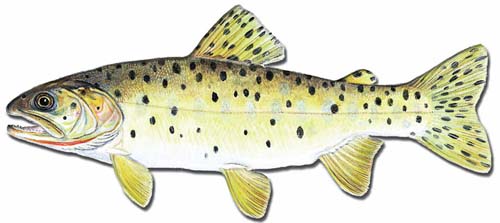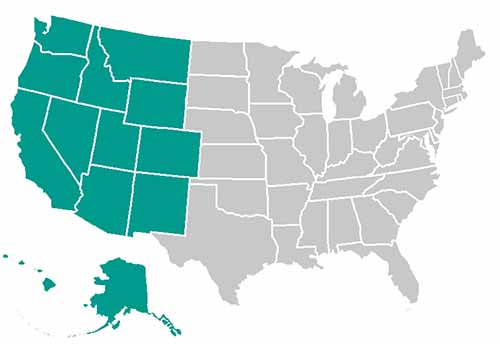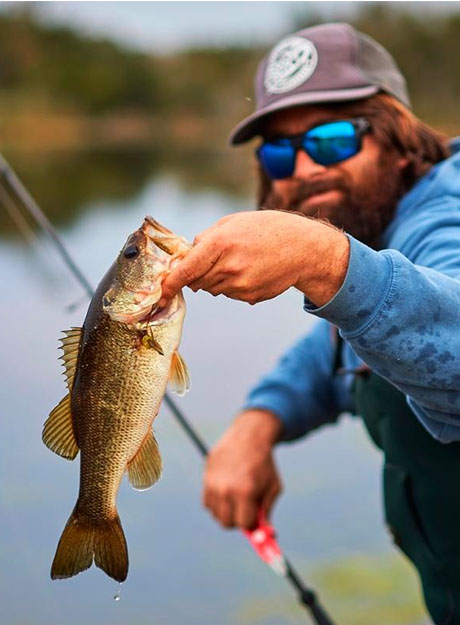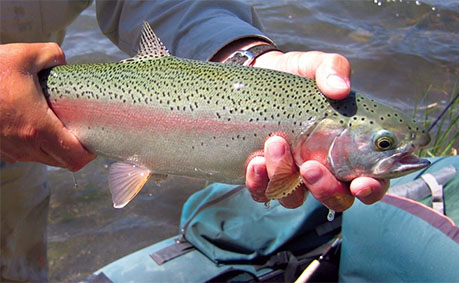Cutthroat trout are found in cold water shallows, rivers and mountain streams through the Pacific Northwest from northern California east to the Colorado Rocky Mountains. Fly fishing is the preferred method for catching Cutthroats.

Habitat: River, Stream, Ocean
How to identify Cutthroat Trout
Cutthroat trout vary in color and size. They get their name from the distinctive yellow, orange, or red streak that lies in the skin folds just under their lower jaws. The cutthroat’s body varies in color from olive to yellow green. Those that live in the sea have more of a blue/silver coloring. In some cutthroats, the forward body and abdomen is red.
Where to catch Cutthroat Trout
Cutthroat trout are found from Alaska’s Prince William Sound down to California’s Eel River. Non-anadromous cutthroats can be found as far north as Alberta, Canada and in the western U.S. Some smaller transplant populations were introduced to various areas, including the eastern shores of Quebec, Canada.

The following are habitats where you can catch Cutthroat Trout:
- Current Edges
- Dams and Falls
- Drop-offs
- Eddies
- Outside of Bends
- Overhanging Trees and Bushes
- Riparian Zones
- Rivers and Streams
- Rock and Boulder Pockets
- Small Pointed Waves
- Undercut Banks
How to catch Cutthroat Trout
Cutthroat trout fishing is popular among anglers who enjoy fly fishing. When fishing for cutthroats, most anglers opt for flies that mimic the fish’s normal prey, especially in areas where there has been a recent insect hatch. This is known as “matching the hatch.” They can also be caught using spinning tackle or rooster tails.
The following are effective fishing methods and techniques for catching Cutthroat Trout:
Best Lures, Bait & Tackle to catch Cutthroat Trout
These fish respond well to all sorts of flies. The best approach is to match the fly to whatever insect has recently hatched in the area. Lures can be effective as well, especially spin flies and rooster tails.
The following are fishing lures, bait and tackle that can be used to catch Cutthroat Trout:



